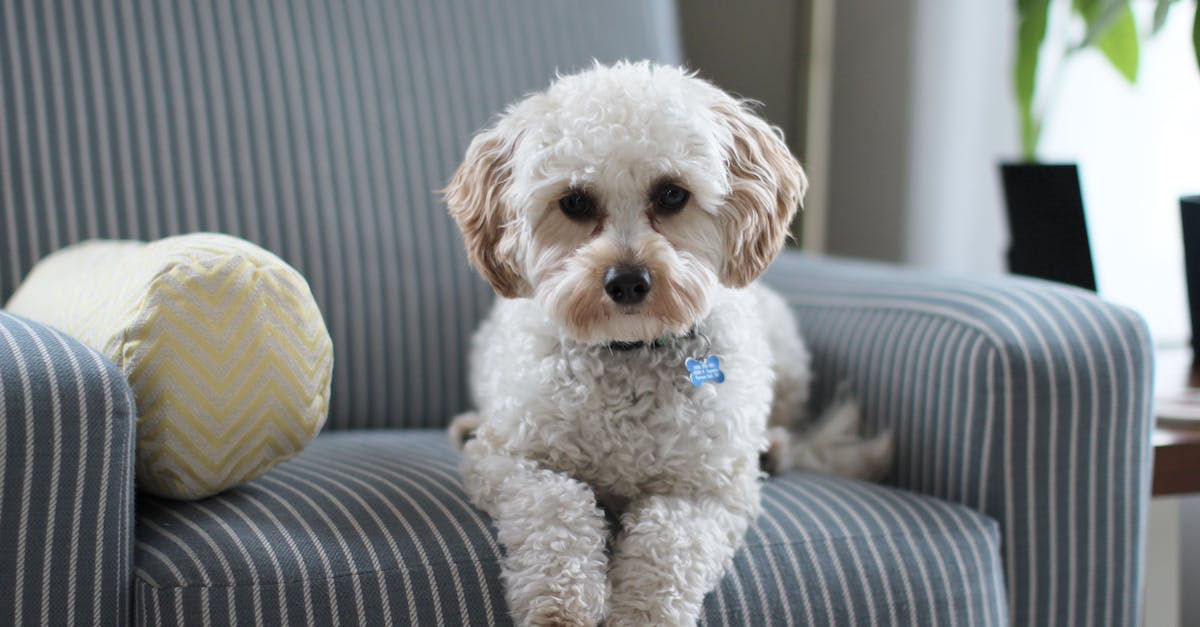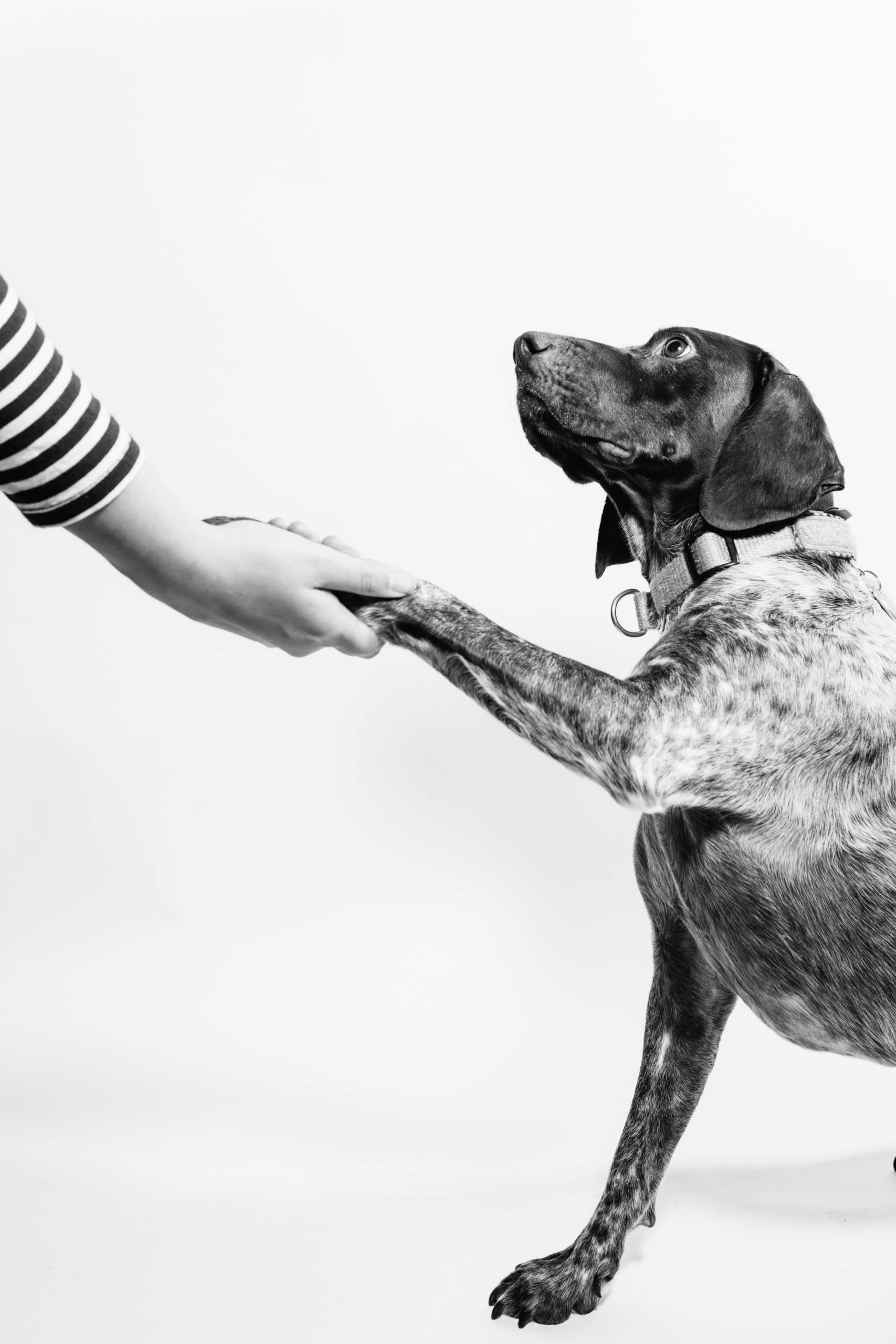If you’re a dog owner, you understand the bond between you and your furry friend. However, as much as we love them, it can be frustrating when they start jumping onto our couches and leaving their fur and paw prints all over.
As much as we want to cuddle with them, it’s important to establish boundaries. In this article, we’ll share some helpful tips and tricks on how to keep your dog off your couch and maintain a clean home. So, let’s get started!
1. Give your dog its own bed or couch
One tip to keep your dog off the couch is to give them their own bed or couch. This will give your pet a comfortable spot to relax that is designated for them. You can even show them how to use it and make it cozy with a favorite blanket or toy.
By providing a comfy spot near the humans, your pet can still feel close to you without having to be on the forbidden furniture. It’s important to be consistent in teaching your dog the house rules, so make sure they understand that their bed or couch is their special spot to relax.
Rewarding good behavior, such as staying off the couch, can also reinforce this behavior. Overall, giving your dog their own designated spot to relax can help keep them off the couch and create a comfortable space for them in your home. [1][2]
2. Teach the command
One to keep a dog off the couch is by teaching them the off-command. This involves using a treat or a toy to lure the dog off the couch when they get on it.
As the dog responds to the off command, gradually remove the treats or toys until they understand that getting on the couch is not allowed. Another command that can be taught is the up command, which allows the dog to join their owner on the couch only when invited.
The spot or place method is also effective, where a comfortable dog bed is placed nearby as an alternative to the couch. Using positive reinforcement techniques such as rewards and praise, the dog can be trained to stay off the couch and on their own bed. [3][4]
3. Do not ever let your dog on forbidden furniture
It’s important to establish rules for our pets, and one of the most crucial ones is not letting them on forbidden furniture. Dogs don’t generalize well, so if they’re allowed on the bed with kids, it can confuse them when you suddenly say no.
It’s essential to establish firm boundaries and stick to them. All house guests must also follow the rules to prevent confusion. Multiple couches in the house can be tempting for dogs, so it’s best to keep them out of areas with forbidden furniture.
Crate training is useful for preventing access to furniture when owners aren’t at home. Rewarding good behavior is a great way to reinforce these rules, and it can be anything from toys to playtime with their owners.
It is a personal decision whether to let pets on furniture or not, but sticking to the rules you set is crucial to ensure consistency and clarity for our furry friends. [5][6]
4. Keep all houseguests informed of the rules
It is crucial to inform all houseguests of the house rules regarding keeping dogs off the couch. This not only ensures consistency in training your furry friend but also avoids any confusion or mixed signals that could potentially arise.
Guests may unintentionally encourage the dog to jump on the couch by allowing them or showing affection to them while they are on the furniture. Therefore, it is essential to communicate with all guests and ensure they understand the rules.
It is also helpful to provide clear guidelines on where the dog’s designated spot is and ensure they have a comfortable bed or soft surface to relax in. [7][8]
5. Avoid having multiple couches for your dog to use
Pets who want to keep their dogs off furniture should avoid having multiple couches for their pets to use. This can confuse pets and make it difficult for them to understand which couch they are allowed on.
It is best to keep them away from all furniture to prevent them from jumping on any couch or bed. Crate training or gating areas where furniture is off-limits is a helpful way to keep pets from accessing it when the owner isn’t home.
Consistency is important in enforcing these rules for all members of the family, as well as guests. Giving pets their own comfortable bed or couch, as well as positively reinforcing good behavior, can also help prevent them from wanting to jump on furniture. [9][10]
6. Do not let your pet have access to the furniture when you are not home
According to factual data, it is important that pet owners should not let their dogs have access to their furniture when they are not at home. This can be achieved through crate training or gating off the area where the forbidden furniture is located.
It is necessary to redirect the dog to a more appropriate place when the owner is not around. It is also important to make sure that all houseguests obey these rules to maintain consistency in the dog’s behavior.
Dogs may become confused when they are allowed on certain pieces of furniture but not others, so it is best to keep them away from furniture where they are not allowed.
By providing the dog with their own bed or couch, and showing them how to use it, they can still feel close to their owners without being on the furniture. Additionally, rewarding good behavior can encourage the dog to stay off the furniture. [11][12]
7. Do not let your dog counter surf or hop up on the dinner table
To avoid your dog counter-surfing or hopping up on the dinner table, it is important to understand why they do it in the first place.
Dogs are natural scavengers and the smell of food, especially human food, can be hard to resist. The behavior is often reinforced when the dog successfully obtains the food, which makes it more likely to happen again.
The best prevention is to never let it happen in the first place. Block off access to the kitchen or keep your dog in a separate room while cooking. Keep counters and tables clear of any food items, and thoroughly clean them after cooking to eliminate any food scents that may be tempting.
Consistently practicing incompatible behaviors, such as boundary training or staying on a designated bed, can also help to reinforce good behavior and prevent counter-surfing habits. [13][14]
8. Reward your dog for staying off the furniture
One way to keep your dog off the couch is to reward them for staying off it. Positive reinforcement is a great training method to encourage good behavior.
You can reward your dog with treats, praise, or playtime when they stay off the furniture and use their designated bed instead. It’s important to also make their bed comfortable and enticing by selecting a bed with a bolster and frequently anchoring a treat-stuffed toy to it.
Consistency is key in training your dog, so make sure that everyone in the household agrees to the no dogs allowed policy and follows through with positive reinforcement.
Management techniques such as making the furniture inaccessible and blocking their access to it when not supervised can also help in training. Try to never use aversive tools, instead focus on positive reinforcement training and management techniques. [15][16]
9. Consider personal preferences for letting your dog on the furniture
When comes to letting your dog on the furniture, it ultimately depends on personal preferences. While some pet owners enjoy cuddling with their furry friends on the bed or couch, others prefer them to stick to their own comfy spots.
Behavioral issues are unlikely to arise from allowing dogs on furniture, but owners should take care not to reinforce bad behaviors and be consistent with their rules.
Keeping dogs off furniture can be achieved by providing them with their own bed or couch, teaching them the “go to your bed” command, and ensuring that everyone in the household follows the same rules.
It is also important to prevent unsupervised access to forbidden furniture and to reward good behavior by offering treats or toys.
Ultimately, pet owners should make a decision based on their own preferences and take steps to ensure that their furry family members are both happy and healthy. [17][18]
Conclusion:
It’s important that all family members and visitors to your home follow the same rules to prevent confusion for your dog. Providing your dog with a comfortable alternative to the couch, like a cozy bed, is also crucial.
Starting the no-access policy from the beginning, even when your pup is a tiny puppy, is beneficial. Additionally, management techniques such as blocking access to furniture with baby gates or placing upside-down laundry baskets or car mats on the couch can be helpful.
When training, teaching your dog cues like “off” and “go to your bed” can positively reinforce good behavior.



